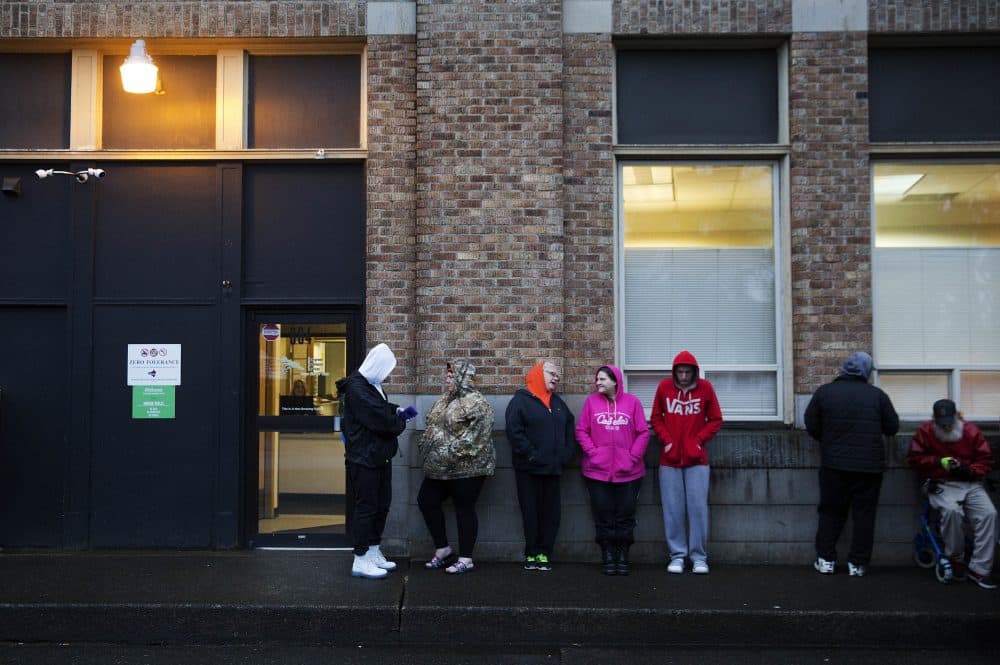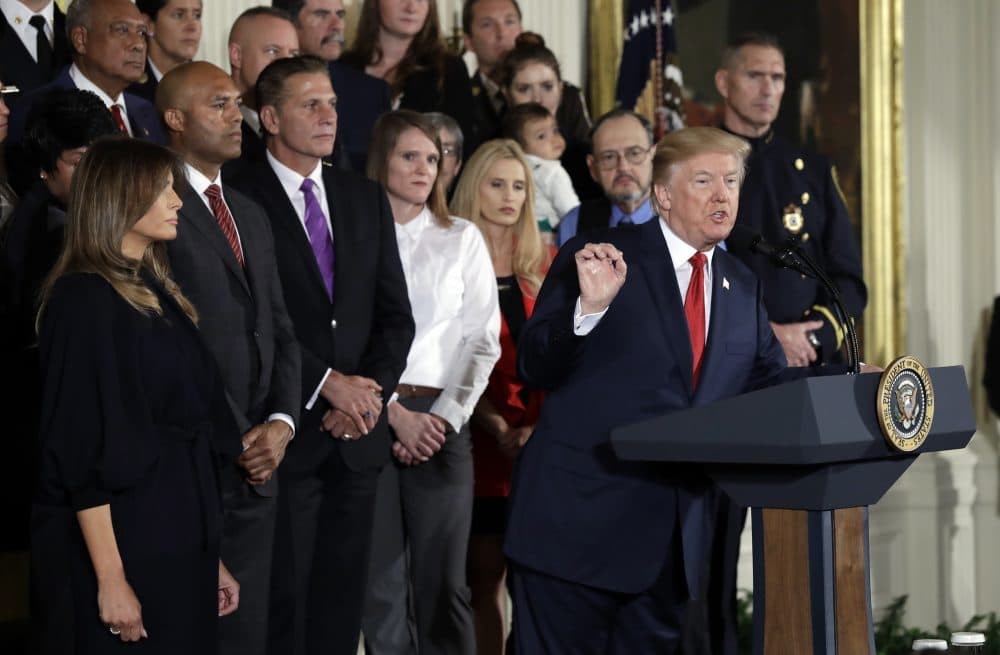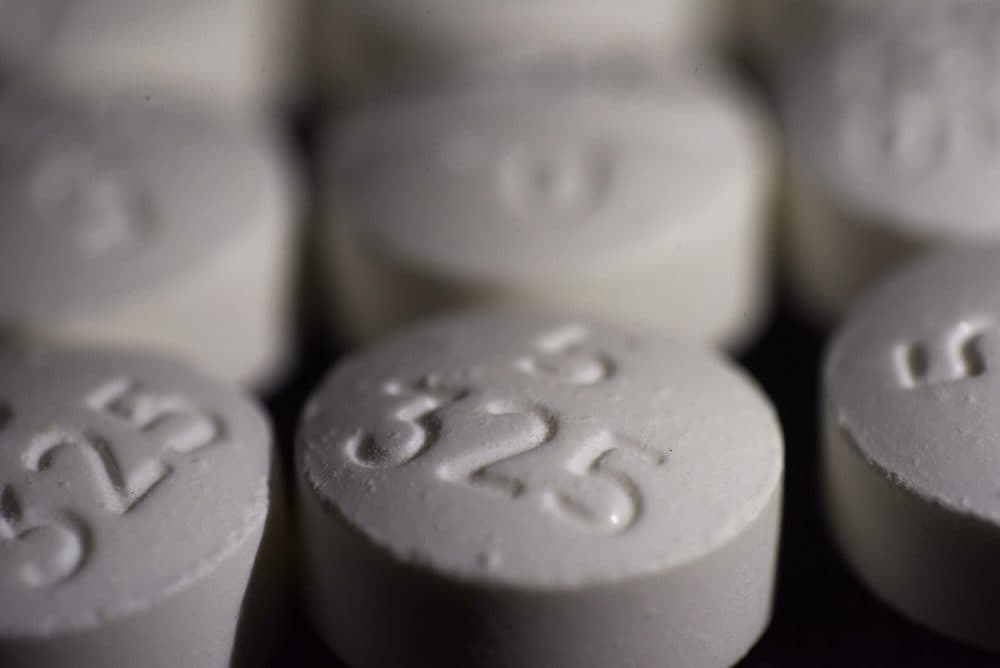Advertisement
Commentary
I've Been Treating Opioid Addiction For A Decade. This Is What We Need To Do

President Trump declared the opioid epidemic a public health emergency last week, a move that waives some federal regulations and eases state access to federal funds. The administration stopped short of declaring a broader national emergency that would have released more abundant funds, a step that the White House opioid commission had recommended. Attorney General Jeff Sessions commented that “people should say no to drug use,” and speculated about marijuana’s role as a gateway drug.
The declaration is long overdue, but the limited funding is worrisome, as is the tone than evokes antiquated and failed measures: expecting a drug-free America, dubbing drug use a moral failing, and reverting to the turf of the marijuana battle.
The opioid epidemic is “getting worse instead of better,” warned a top public health official recently. Opioid overdose deaths have quadrupled since 1999, currently averaging more than 90 per day -- a number that does not include deaths due to other opioid use-related causes; as well as the devastating effects on the lives of those afflicted, and their families and communities.
I have been treating opioid addiction for the past decade, and what continues to be omitted from the discussion is the effective treatment that we already have but is inadequately provided to those who need it.
Consider this tragic scenario: a person with opioid addiction undergoes detoxification, followed by inpatient rehabilitation, uses after discharge, overdoses and dies. Could that person’s death have been prevented? Too often, the answer is yes — simply by paying attention to what we already know.

Detox followed by non-pharmacologic measures does not seem to work — in other words, the overwhelming majority of people relapse. If this were not bad enough, what this approach does significantly change is tolerance — the body’s ability to handle usual doses of the drug goes down steeply. In essence, relapse is the norm, but with an added window of increased vulnerability to the lethal effects of the drug.
Meanwhile, an extensive body of evidence demonstrates that medication-assisted treatment (MAT) with buprenorphine or methadone reduces the risk of death, including by overdose, and results in improved health and functioning. There is a third form of MAT — an extended-release injectable form of an opioid blocker, naltrexone — for which the evidence is more limited, though a recent study suggests that it may be as effective as buprenorphine in maintaining short-term abstinence.
The counterargument is that buprenorphine and methadone are themselves opioids — though longer acting, they are in the same class as heroin. This sentiment was given credence by Dr. Tom Price, former secretary of Health and Human Services, who has said that “if we just simply substitute buprenorphine or methadone or some other opioid-type medication for the opioid addiction, then we haven't moved the dial much.” Giving buprenorphine or methadone to a person addicted to opioids may seem like madness. But it isn’t.
Here’s why: Addiction constitutes compulsive use despite harm. It should not be confused with physical dependence — tolerance to the drug or withdrawal after stopping it. Addiction and physical dependence are distinct concepts. And so, is a person stabilized on buprenorphine or methadone physically dependent? Surely — they would go into withdrawal were they to stop the medication abruptly. But are they actively addicted — meaning, are they compulsively using the drug despite harm?
Quite the opposite — buprenorphine and methadone help people stop or reduce use of other opioids. As a result, people’s lives have a better chance of stabilizing. Not surprisingly, buprenorphine and methadone are on the World Health Organization’s list of essential medicines. To put it simply, they work.
The opioid crisis surely needs a multifaceted approach. But let us be clear about what treatment is effective for opioid addiction — and it is unequivocally MAT with buprenorphine or methadone, with, thus far, a secondary role for injectable naltrexone.

How long one should stay on MAT is a separate discussion. Many benefit from indefinite treatment, while others may eventually come off MAT, or perhaps even age out of addiction. But the concern ought not to be whether one is on MAT or not — the concern and goal is to have a livable life. And to stay alive, most importantly.
Simply, MAT is widely recognized as the most pragmatic way to save lives that would otherwise be lost to opioid addiction.
And yet, there are numerous barriers in the provision of MAT. Insurance coverage continues to be limited, many areas do not have methadone clinics, and buprenorphine providers are often hard to find and have regulatory limits on prescribing. State-funded programs continue to underutilize MAT, with cumbersome Medicaid authorization requirements and lifetime limits. Narcotics Anonymous itself does not consider buprenorphine or methadone to be compatible with its model of recovery. Shockingly — yet given existing barriers, not surprisingly — only a fraction of people with opioid addiction receive MAT.
Addiction is baffling. Why do people continue a behavior that is harming them? From a treatment perspective, we do not need to speculate on the “why” in order to know what works. It is imperative that we allocate resources to treatments whose effectiveness is backed by scientific evidence. We cannot afford to rely on speculation alone to battle the beast of addiction. Especially in the face of a crisis that is decimating the nation.
